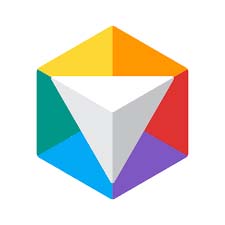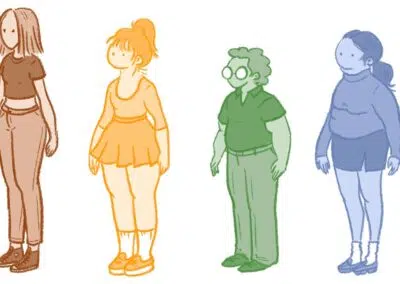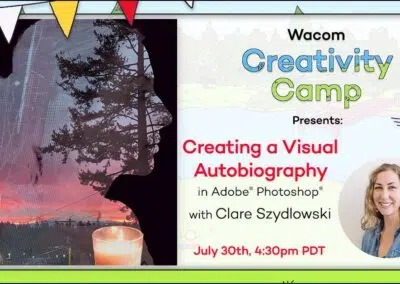
CG Spectrum is an online animation, visual effects, game development, and 3D visualization school, whose mission is to inspire and prepare industry-ready film, game, and visualization artists. Their online courses are some of the best in the industry for beginners and experienced creatives alike. Check out their website to see all of their offerings. The below article originally appeared on CG Spectrum’s blog.
Professional 3D character modeler J Hill shares two key tips on how to become a better 3D artist and explains why they are so important to improving your craft. Some of the reasons might surprise (and motivate) you!
J has been working in the entertainment industry since 2008. He is currently employed at Californian indie game development studio Turtle Rock Studios as a Lead Character Artist.
When he’s not creating digital characters for video games like Apex Legends and Back 4 Blood, he runs a popular YouTube channel where he helps artists pursue their interests in digital art, including 3D character art, ZBrush sculpting, 3D modeling, game art, and rendering.

The importance of practicing your 3D art
As a professional artist, you’ll need to meet client and internal deadlines. This is one of the reasons J believes taking time to practice your craft outside of work is essential. His philosophy is that if you do something ten times, you’ll become that little faster on the tenth time than you were the first. And you’ll discover little ways to work more effectively and efficiently.
“I’m always trying to perpetuate this idea of, if we can just get comfortable sitting in a chair and doing art daily for a few hours, it will be like taking a small step forward every day. With time, you will get better.”
“And it’s almost impossible, if not impossible, to get worse at something if you do it every day. It’s not like you’re going to go backward and start making stick figures or something like that! You won’t forget how to use Maya if you’re sitting there using it every single day.”
“Progress, no matter how big or small is something tangible to focus on — an achievable goal. If you use a platform like ArtStation to showcase your work, look at the first piece you posted, compare it to your most recent artwork, and see if you can spot any improvements.”
The value of seeing your progress is why J keeps up his older YouTube videos. He wants aspiring artists to be able to see how he has honed his skills over the years — to take note that a lot of his talent has come through time and practice.
“I wish more senior artists did this. I think it could be another form of motivation for someone just starting out to be able to see a more senior-level artist’s earlier work and think, ‘Hey, this guy made art ten, fifteen years ago, and he’s still doing it, and he’s a little bit better at it now’. Makes sense, you know?”
If you’re striving to become a character modeler, like J, and you want exercises, he suggests starting with sculpting just one part of the body rather than the whole thing in a program such as ZBrush.
“From a sphere or a cube, just make some feet or ears, then hands, and eventually faces. Probably in that order because they get more difficult. But just those body parts are very organic, and you’re practicing convex shapes, overlapping shapes, and anatomy. You can tell a story with them. Even though they’re only one small part, you can still add character to them. You can choose an age, you can choose a pose.”
J says if you practice something enough times, your muscle memory will start to assist you in your work, and it will allow you to focus more on your art rather than thinking about the software you’re using to create it.
The importance of personal projects
A great way to practice your 3D art and keep yourself sharp is by taking on personal projects. J believes they also help you balance what you’re doing at work and allow you to have something you have more control over, and that is just yours. If there’s a technique you want to try, but your current work assignment doesn’t require it, why not try it at home?
“I think it’s super important to be able to have things that you can control, and you can get satisfaction from. For example, if I’m working on a sci-fi game or a realistic game, then in my personal time, I’m going do something different from that, so it feels fresh and interesting.”
“Usually, at work, you’re given directions and have to follow a brief, but at home, you can just do whatever you want. And sometimes that leads to work that piques other people’s interest, and they contact you.”
It’s also important to remember that if you’re not doing your own personal projects, even when you’re actually working at a studio, you might not have new work to add to your portfolio or showreel.
J warns that if you’re at a studio and the project you’re part of gets canned, you’re not usually allowed to include any work for that project in your portfolio (and you probably already signed an NDA agreeing to this).
“You never know what’s actually going to make it out of a studio — what you’re allowed to share and what you’re not allowed to share. And I’ve seen this happen to a lot of students and freelancers trying to get their start in the industry. It’s a hard pill to swallow when you’ve been working your ass off on something.”

One aspect of personal projects that J finds particularly enjoyable is being able to create 3D models that focus more on the artistic side and less on the technical aspects like having to worry about wireframes and poly-count, etc.
“I just do it fast and dirty. And it doesn’t matter because it’s not in a production. Why add all those kinds of restrictions to your work that take so much of your time? As long as you can prove you can also do production-quality work, you don’t need to do it every time. It’s more important that your art is visually interesting and shareable and that people get some kind of positive reaction out of it to help you stand out from the crowd.”
J ascertains that personal work can also be the deciding factor in whether or not you get hired for the job you applied for. By showcasing your personal work, you’re demonstrating to studios that you are passionate about what you do, that it’s more than just your job, and that you are constantly trying to improve and grow.
“When I would do interviews, and if we ever were on the fence about an applicant, we’d ask, ‘Do they do personal work?’ And we could literally hire one person over another just based on that. It shows they have their own ideas and are out there doing stuff.”
Creating a 3D character takes time; it’s a marathon, not a sprint. If you tackle too big of a personal project, it will take you longer to spot your progress, making you more susceptible to giving up. This is why J recommends breaking up longer projects with faster, easier wins to keep you motivated.
“I’m always encouraging people to mostly do projects that take three days or less. Studies and heads and sculpts and texture, whatever, just things that are interesting and will look finished. Don’t only choose stuff that’s going to take two months to finish; go with some quicker projects too. That way you can build up to, or mix in, your smaller tasks with the bigger two-month projects.”
Want to become a better 3D artist and get expert guidance on your personal projects?

CG Spectrum’s 3D modeling courses ensure you get in tons of practice while learning the skills that will help get you hired in film and games. Using industry-standard software like Maya, ZBrush, and Substance Painter, you’ll learn how to build assets from scratch, including 3D character models and environments, which you can add to your portfolio!
You’ll be led by an industry pro each step of the way including receiving personalized feedback on your work to help you progress as a 3D modeler.





